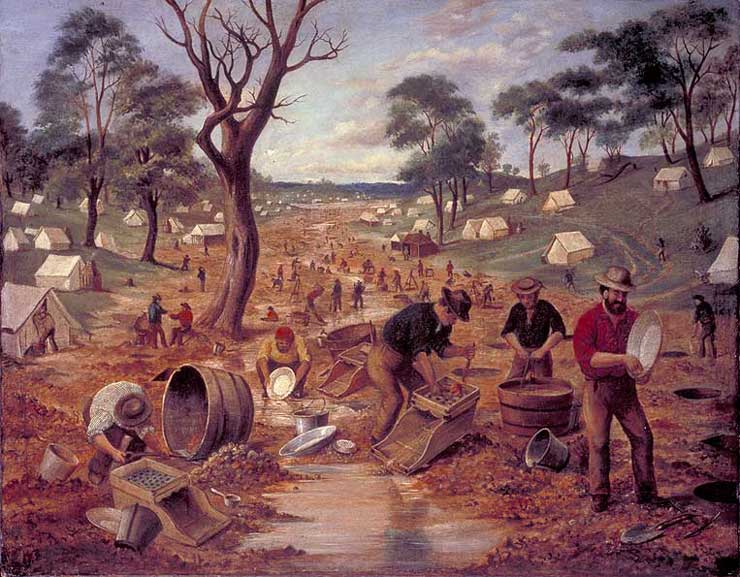 Australian gold diggings, c1855
Australian gold diggings, c1855
TLF ID R3034
This is an oil painting measuring 70.5 cm x 90.3 cm, painted about 1855 by Edwin Stocqueler (1829-1895), showing men working on the Bendigo gold field in Victoria. The men are panning, puddling and cradling for gold on both sides of a stream in a tent-dotted valley. The valley is stark, with only a few trees remaining. The edges of the stream are muddied and polluted.
